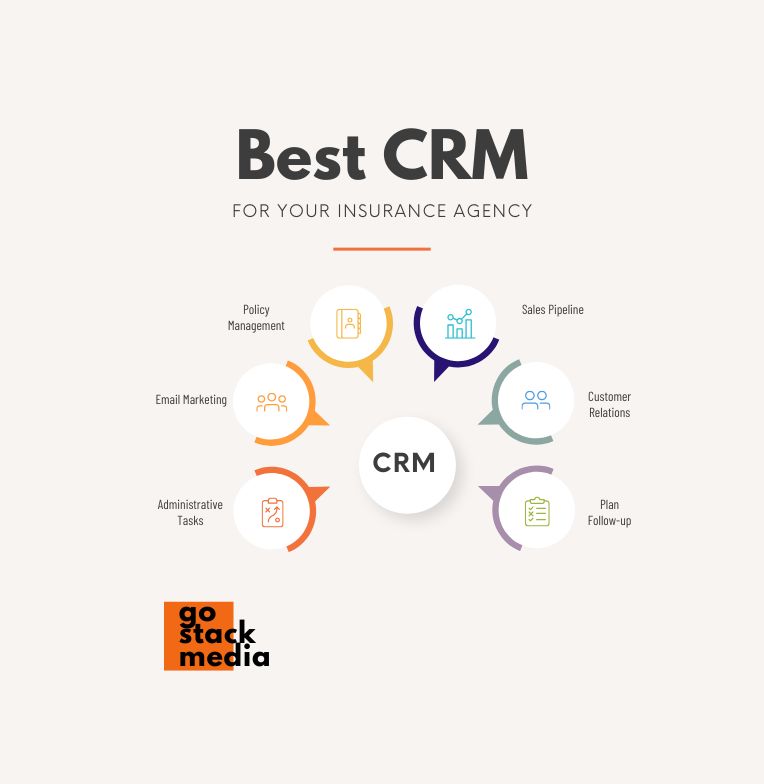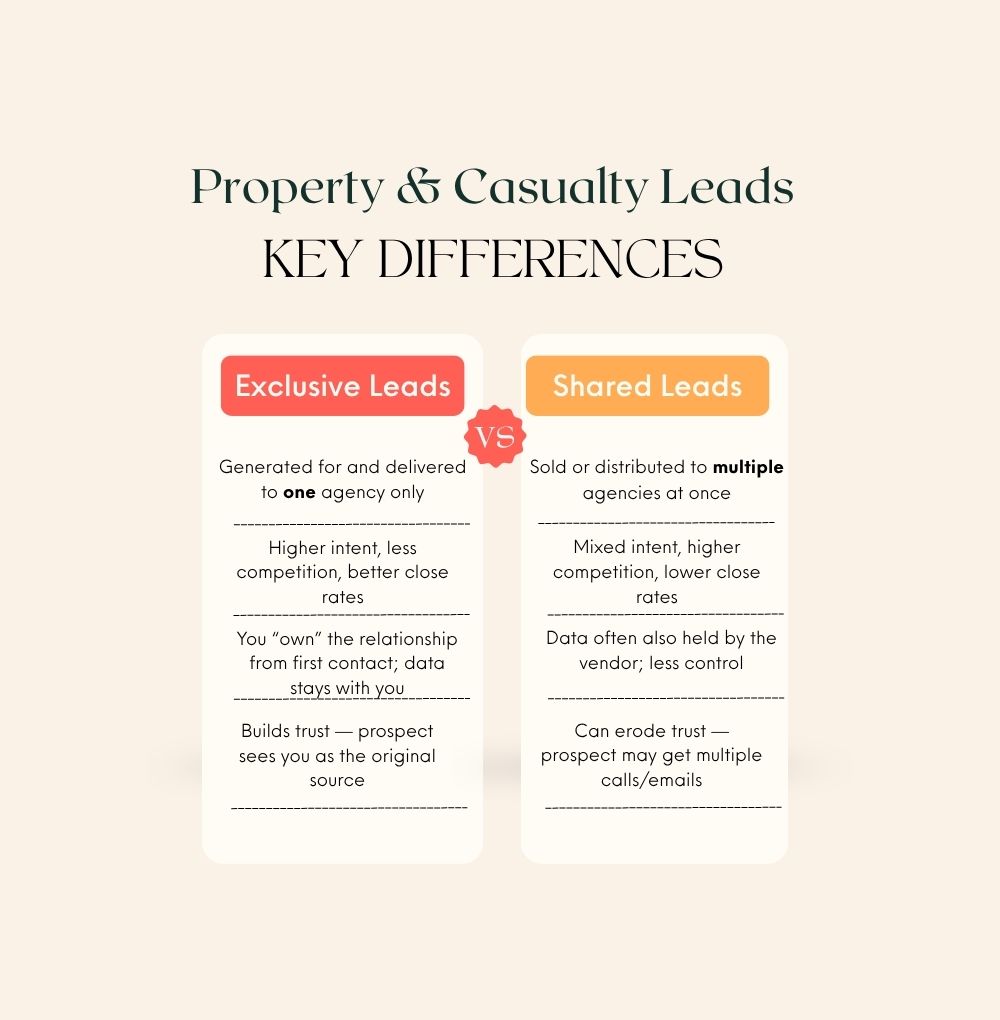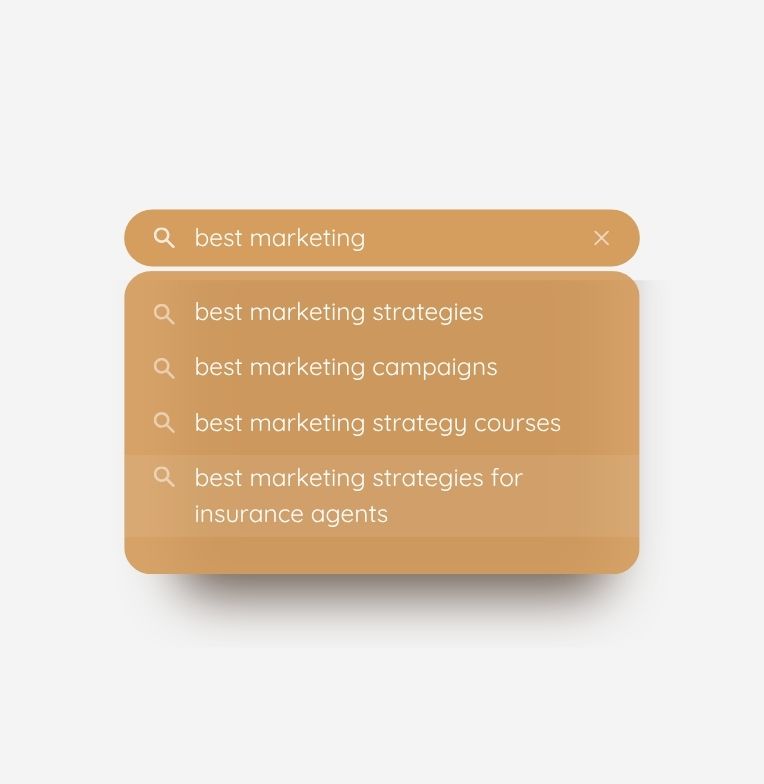Table of Contents
Updated: May 20, 2025
If you’re in insurance, you already know the business has changed.
Clients are looking online first, and if you’re not showing up—your competitor is.
I’ve been in this industry long enough to see what works and what doesn’t. And I can tell you this: digital marketing isn’t just a nice-to-have anymore. It’s the backbone of growth.
To stand out, you don’t just need to be better—you need to be way better. Ten times better. And your strategy can’t stop once a policy is signed. That’s where the real relationship begins.
From one insurance pro to another, I’ve put together a no-fluff guide that breaks down what actually works. Download the Blueprint to Digital Marketing for Insurance and start building a system that gets results.
Now, here are the 10 things I wish every insurance professional knew about digital marketing.
1. Your Website Is Your First Impression
Before a prospect ever picks up the phone, they’re sizing you up online. Your website is often their first stop—and first impression.
They’re not browsing for fun. They’re searching for answers. If your site is cluttered, outdated, or confusing, they’re gone.
Make it easy. Make it fast. Make it mobile.
A clean, modern design with intuitive navigation isn’t just nice—it’s necessary. Mobile responsiveness, quick load times, and clear calls-to-action show that you’re legit and ready to help.
In short: your website isn’t just a digital brochure. It’s your 24/7 sales rep.
2. If You’re Not Showing Up, You Don’t Exist (We’re Talking SEO)
Let’s be real—if your agency doesn’t show up when someone Googles “life insurance in [name-of-city]” or “best small business insurance,” you’re invisible. Period. Sorry.
SEO (Search Engine Optimization) is what gets you seen. It’s how you show up when it counts—at the exact moment someone is searching for what you offer.
But here’s where most agents get it wrong:
They throw some keywords into a page and hope for the best. That’s not SEO. That’s guesswork (and, keyword stuffing).
If you want real visibility, you need to:
- Dial in your on-page SEO: Make it crystal clear what your website is about. Use the right keywords in the right places—titles, headers, meta descriptions, and image tags.
- Structure your site properly: Clean navigation, fast loading times, mobile responsiveness. Google notices this.
- Build quality backlinks: These are links from other reputable sites that point to yours—kind of like getting referrals from Google’s trusted friends.
Bonus: Tie your SEO into your local strategy. Add your city, neighborhood, or region into your content so you show up for local searches like “auto insurance in Grand Rapids.”
And most importantly—track it. Use tools like Google Search Console to see what’s working and what needs fixing.
📌 Pro tip from the trenches: The agents winning with SEO aren’t necessarily writing more—they’re writing smarter. It’s about clarity, consistency, and being useful.
3. Content Isn’t King—Useful Content Is
You’ve heard “content is king” a million times. But let’s be clear: cranking out content for content’s sake won’t move the needle.
What works is useful content—stuff your audience actually cares about. Think answers, not just words on a page.
When someone types “do I need umbrella insurance?” or “term vs whole life insurance,” they’re looking for clarity. If your blog, video, or infographic gives them that—congrats, you just built trust and boosted your SEO.
Here’s how to do it right:
- Think like your customer, not like an agent.
Break down jargon. Simplify the complex. Speak human. - Diversify your formats.
Blog posts, short videos, FAQs, calculators, visuals—mix it up based on what your audience prefers. - Be consistent.
Google likes fresh content. Clients like seeing that you’re active and engaged. A monthly blog is good. Biweekly? Better. - Don’t forget intent.
Some content builds awareness (“What is renters insurance?”), while other content drives action (“Review your policies today”). Know the difference and use both.
Real-world example?
A post like “Life Insurance for New Parents: What You Need to Know” will do two things: educate and attract people actively looking for help. That’s strategic content.
📌 Pro tip: One great article that ranks well can bring in more leads than 20 random posts nobody reads. Focus on quality, not quantity.
4. Email Gets The Biggest ROI
Email isn’t just alive—it’s one of the best tools you have to stay top-of-mind with clients and leads. But it only works if you treat it as part of a long-term relationship, not a one-off blast.
Here’s how to use email effectively in the insurance space:
- Stick to a schedule: Whether it’s once a month or bi-weekly, showing up regularly helps people remember your name when it matters most.
- Use seasonal timing: Open enrollment, storm season, wedding season, summer road trips—there are natural moments throughout the year when your clients are already thinking about coverage. Align your messaging with what’s happening in their lives.
- Lead with value, not sales: Think updates, FAQs, deadlines, reminders, renewal tips. Give them a reason to open—and stay.
- Cross-sell strategically: Got a home insurance client who doesn’t have auto with you? That’s an easy win with the right message at the right time.
And don’t forget: email ROI is insane. We’re talking $36+ return for every $1 spent. But only if you treat it like a relationship tool—not just another checkbox.
📌 Pro tip: Every time you close a policy, that’s the start of your email marketing—not the end. If you’re ever stuck on what to send, just answer the last question a client asked you. If one person needed to hear it, others probably do too.
5. Social Media Engagement Is Essential
You don’t need to go viral. You just need to show up consistently and authentically. In a business built on trust, social media is where that trust starts to form—long before a quote request ever comes in.
In 2024, 92.65% of the US population is active on social media, according to Statista.
Here’s how to make it work without burning out:
- Pick 1-2 platforms and go all in: You don’t have to be everywhere. LinkedIn and YouTube are great for insurance pros. If you have the bandwidth, Instagram or TikTok can humanize your brand.
- Be real: People don’t want to see stock photos and canned slogans. Share team photos, client success stories (with permission), helpful tips, and even local community updates.
- Engage, don’t just post: Reply to comments. Answer questions. Join conversations. The goal is to build familiarity—so when someone needs coverage, they think of you.
- Make it visual: Even a quick photo of your team, a coverage checklist, or a seasonal reminder can get more traction than a wall of text.
And most of all—stay consistent. One solid post per week is better than a flurry followed by silence.
📌 Pro tip: You don’t have to be a social media expert. You just have to show you’re active, real, and ready to help.
6. Pay-Per-Click (PPC) Advertising Can Drive Immediate Results
While SEO and content take time, Pay-Per-Click (PPC) advertising gives you the power to get in front of the right people right now—but only if you know what you’re doing.
Platforms like Google Ads and Facebook Ads let you target by location, interests, and search behavior. It’s a great way to drive traffic, promote special offers, or jumpstart new campaigns.
But here’s the catch: PPC isn’t “set it and forget it.” It needs strategy and oversight.
What to keep in mind:
- Start with a goal: Are you driving traffic to a landing page? Getting quote requests? Retargeting people who visited your site but didn’t convert?
- Use relevant keywords: Not all clicks are created equal. Target search terms with clear buying intent—like “business insurance quote” instead of just “insurance.”
- Write strong, clear ad copy: You’ve got a few words to convince someone to click. Be direct. Focus on the benefit to the customer.
- Watch your budget: Don’t just boost a post and hope for the best. Set a budget, monitor performance, and make adjustments.
- Always track results: If you’re not checking what’s converting, you’re wasting money. Use conversion tracking tools to measure real ROI.
PPC can absolutely bring quick wins—but only if it’s managed like an investment, not a gamble.
📌 Pro tip: If you’re testing PPC for the first time, keep the campaign tight—target one product, one audience, and one clear call to action.
7. Don’t Overlook Local SEO
Most insurance buyers aren’t looking across the country—they’re looking across town. And if your agency isn’t showing up in local search results, you’re losing business to someone who is.
Local SEO helps you get found by people searching for coverage near them. It’s one of the simplest, highest-impact moves you can make.
Here’s what to focus on:
- Claim and optimize your Google Business Profile: This is non-negotiable. Fill out every section—services, hours, photos, Q&A—and keep it updated.
- Use your location in your content: Phrases like “home insurance in Tulsa” or “best commercial insurance in Boise” help search engines connect your site to local intent.
- Encourage reviews from happy clients: Positive reviews help you rank higher and earn trust with new prospects. Ask after every policy is finalized.
- Add location-specific landing pages (if you serve multiple areas): These pages speak directly to the needs of each community and improve your chances of ranking in local searches.
Local SEO isn’t complicated—but it’s often ignored. That’s a big mistake. People want to work with someone nearby who gets their area, their needs, and their risks.
📌 Pro tip: Agencies that invest in local SEO often see higher conversion rates—because proximity builds trust.
8. Analytics and Tracking Are Non-Negotiable
If You’re Not Tracking, You’re Guessing
You wouldn’t sell a policy without analyzing the risk. So why run your marketing that way?
Analytics turns guesswork into strategy. It shows you what’s working, what’s not, and where to focus your energy (and budget).
Here’s what every insurance pro should be tracking:
- Website traffic: Tools like Google Analytics (GA4) tell you how many people are visiting your site, where they’re coming from, and what pages they’re viewing.
- Search performance: Google Search Console shows you what keywords are driving clicks and where you’re ranking. It’s free, and it’s gold.
- Lead sources: Are your leads coming from SEO, email, PPC, or social media? You need to know what’s paying off—and what’s wasting time.
- Conversions: Whether it’s quote requests, contact form fills, or phone calls, track the actions that actually lead to new business.
Even simple dashboards or monthly check-ins can reveal patterns. Maybe one blog post is bringing in half your traffic. Maybe your PPC clicks aren’t turning into calls. Either way, you’ll only know if you’re looking at the data.
📌 Pro tip: Set one hour per month to review your numbers. Don’t hit the snooze! It’s the most profitable meeting on your calendar.
9. Client Reviews And Testimonials Build Trust
Reviews Aren’t Just Social Proof—They’re Your Digital Reputation
When someone’s deciding who to trust with their insurance, they’ll look you up. And what they find—especially in your reviews—can make or break the deal.
In fact, nearly every consumer reads reviews before choosing a local service provider, and most trust them as much as a personal recommendation.
So here’s what to do:
- Ask for reviews—every time: Make it part of your process. After a policy is finalized, send a short email or text asking if they’d be willing to leave feedback on Google.
- Make it easy: Include a direct link to your Google Business profile or preferred review site. The fewer clicks, the better.
- Highlight great reviews on your website and social media: They’re not just compliments—they’re content. Use them to show your credibility and professionalism.
- Respond to all reviews, good and bad: A quick “thank you” shows appreciation. A calm, respectful response to a negative review shows professionalism. Both matter.
And remember—silence can be just as loud as a bad review. If your competitors have 50 reviews and you have 3, that says something.
📌 Pro tip: Add a simple review request link to your email signature or follow-up messages. It keeps the ask casual, but consistent.
10. Mobile Optimization Is Crucial
Pull up your website on your phone right now.
Most people looking for insurance are doing it from their phones. In fact, many agents are seeing 70% or more of their traffic coming from mobile devices.
If your site is slow, clunky, or hard to navigate on a phone, you’re turning people away—before you even get a chance to talk to them.
Here’s what mobile-ready really means:
- Fast load times: If your site takes more than a couple seconds to load, people bounce.
- Simple navigation: Menus should be clear. Buttons should be easy to tap. Forms should be short and user-friendly.
- Responsive design: Your site should automatically adjust to fit any screen—phone, tablet, laptop. No pinching or zooming.
- Mobile-friendly emails: Don’t forget your campaigns. Emails should be easy to read, with buttons that are big enough to click on the go.
This isn’t just about looking good—it’s about being usable when and where people need you most.
📌 Pro tip: Run your site through Google’s Mobile-Friendly Test. It’s free—and it’ll show you exactly what needs fixing.
Learn Digital Marketing That Actually Works for Insurance
Digital marketing for insurance isn’t about chasing trends. It’s about building a system that consistently brings in leads, strengthens client relationships, and grows your business—whether you’re a solo agent or running a full-service agency.
From SEO to email, social to mobile—every piece matters. And the good news? You don’t need to master it all at once. You just need to start with what works.
I’ve spent years in this industry, testing what works and cutting what doesn’t. That’s why I created the Blueprint to Digital Marketing for Insurance—a straightforward, no-fluff playbook built specifically for insurance professionals.
📥 Grab your copy of the Blueprint today
Real strategies. Real results. From one insurance pro to another.
You May Also Like
👉 The Blueprint To Digital Marketing for Insurance Pros


